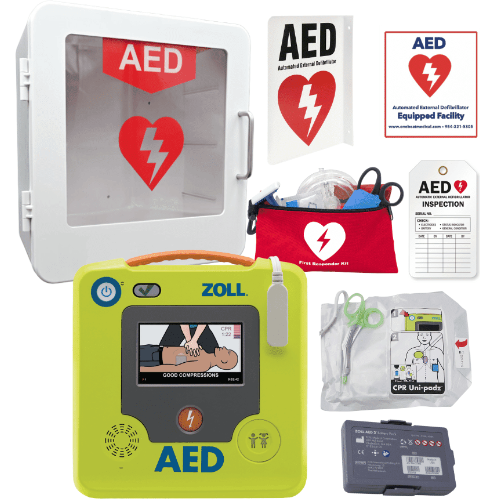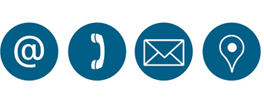In Broward County, Florida, there are specific regulations and guidelines regarding the installation and maintenance of Automated External Defibrillators (AEDs). Here are the key points for AED compliance:
1. Florida Statutes
Good Samaritan Law: Florida’s Good Samaritan law protects individuals and businesses from liability when using an AED in an emergency, as long as they act in good faith and in a reasonably prudent manner.
2. Public Access AEDs
Businesses and public facilities are encouraged to have AEDs available. Specific regulations may vary based on the type of establishment (e.g., schools, gyms, large venues).
3. Training Requirements
While training for staff is not always mandated, it is highly recommended that employees are trained in CPR and AED use to ensure effective response in emergencies.
4. Location and Visibility
AEDs should be placed in easily accessible and visible locations. Proper signage indicating the location of the AED is required.
5. Maintenance and Inspection
Regular maintenance checks are essential to ensure the AED is operational. This includes checking battery status, pad expiration dates, and conducting routine inspections.
6. Registration
In some cases, businesses may be required to register their AEDs with local emergency services or health departments. Check with Broward County EMS for specific registration requirements.
7. Record Keeping
Maintain records of training sessions, maintenance checks, and any incidents where the AED is used.
8. Local Regulations
Check for any additional local ordinances or regulations specific to Broward County, as they may have specific requirements beyond state laws.
Recommendations:
Consult Local Authorities: Contact Broward County Emergency Services or the local health department for the most current and applicable regulations.
Regular Training: Provide ongoing training for staff to ensure they are familiar with AED operation and emergency procedures.
An AED kit typically refers to a complete package that includes an Automated External Defibrillator (AED) along with essential accessories and supplies for effective emergency response in the event of a cardiac arrest. Here’s what an AED kit generally contains:
Components of an AED Kit
Automated External Defibrillator (AED)
The primary device that analyzes the heart's rhythm and delivers an electric shock if needed. Most models provide voice prompts and visual indicators to guide users through the process.
Electrode Pads
Adult Pads: Used for most adults.
Pediatric Pads: Smaller pads designed for use on children, often with specific instructions for use.
CPR Mask
A barrier device that allows the rescuer to provide rescue breaths safely during CPR.
Disposable Gloves
Latex or nitrile gloves to protect the responder while administering aid.
Scissors
For cutting clothing or other materials to access the chest during an emergency.
Alcohol Wipes
For cleaning the skin where the pads will be applied, ensuring good adhesion.
User Instructions
Clear, step-by-step instructions for operating the AED, often in a user-friendly format.
Maintenance Log
A log to track inspections, maintenance, and any usage of the AED, including battery and pad expiration dates.
Emergency Contact Information
Instructions on whom to contact for emergency services and internal protocols.
Signage
Clear signage indicating the location of the AED and how to use it, often featuring bright colors for visibility.
Benefits of Having an AED Kit
Immediate Response: Enables quick action in cardiac emergencies, potentially saving lives.
User-Friendly: Designed for use by laypersons, making it accessible to non-medical staff and bystanders.
Training Resource: Having an AED kit can encourage staff training and familiarity with emergency procedures.
Considerations for Implementation
Placement: Ensure the AED kit is placed in a highly visible and easily accessible location.
Regular Maintenance: Schedule routine checks to ensure the AED and its components are functional and up to date.

Installing an AED (Automated External Defibrillator) in a small business can significantly enhance workplace safety. Here are some key considerations and benefits for small businesses:
Benefits of Having an AED
Life-Saving Potential: AEDs can dramatically increase survival rates for cardiac arrest victims. Quick access is crucial for effective intervention.
Employee Safety: Providing an AED demonstrates a commitment to employee health and safety, fostering a supportive work environment.
Guest and Customer Care: If your business serves the public, having an AED can enhance customer safety and confidence.
Regulatory Compliance: Depending on your location, there may be legal requirements for AEDs in certain types of businesses, particularly those with larger foot traffic.
Emergency Preparedness: An AED is a key component of a comprehensive emergency response plan, ensuring you’re ready for medical emergencies.
Training Opportunities: Installing an AED encourages staff training in CPR and AED use, promoting a culture of safety.
Improved Reputation: Businesses that prioritize safety can enhance their reputation, attracting more customers and employees who value a safe environment.
Key Considerations for Implementation
Choosing the Right AED:
Look for user-friendly models that provide clear audio and visual instructions.
Consider features like adult and pediatric pads, long battery life, and durability.
Location:
Place the AED in a visible and accessible location, ideally near high-traffic areas or where large gatherings occur.
Training:
Provide training for employees on how to use the AED and perform CPR. Consider regular refresher courses.
Maintenance:
Implement a routine for checking the AED to ensure it’s operational, including battery checks and pad expiration dates.
Emergency Protocols:
Develop clear emergency response protocols and ensure all staff are familiar with them, including how to call emergency services.
Signage:
Use clear signage to indicate the location of the AED and provide simple usage instructions.
Budgeting:
Factor in the cost of the AED, ongoing maintenance, and training when budgeting for the installation.
Additional Tips
Engage with Local EMS: Inform your local emergency medical services about your AED installation so they can assist in training and know its location.
Encourage a Safety Culture: Promote awareness about the importance of having an AED and emergency response readiness among employees.
By installing an AED, small businesses can enhance their safety measures, potentially saving lives in critical situations. If you need further assistance or specific product recommendations, feel free to ask!






